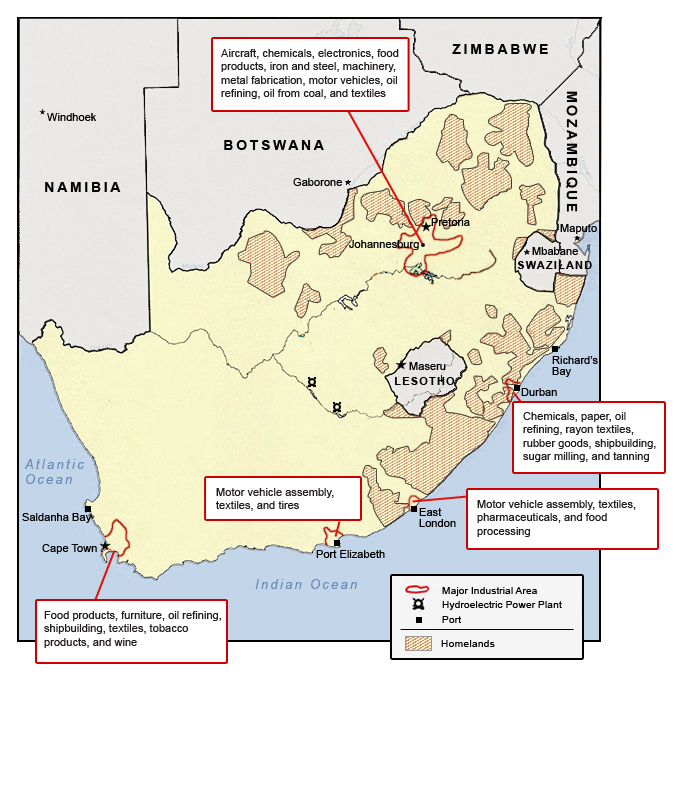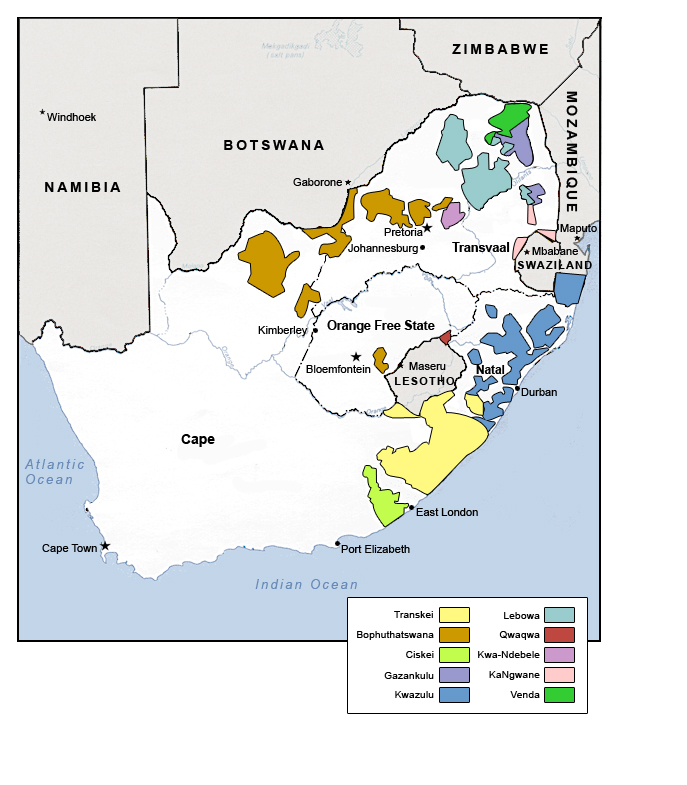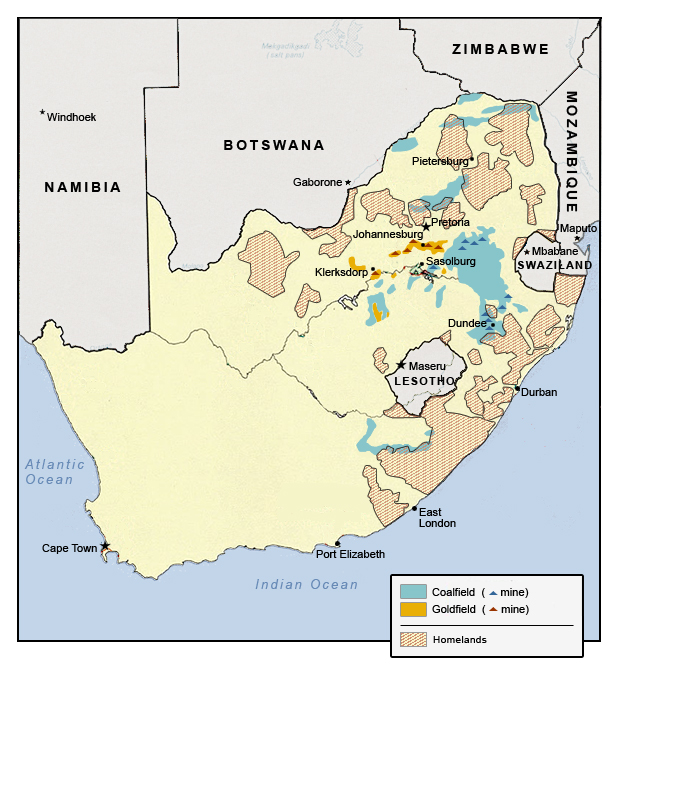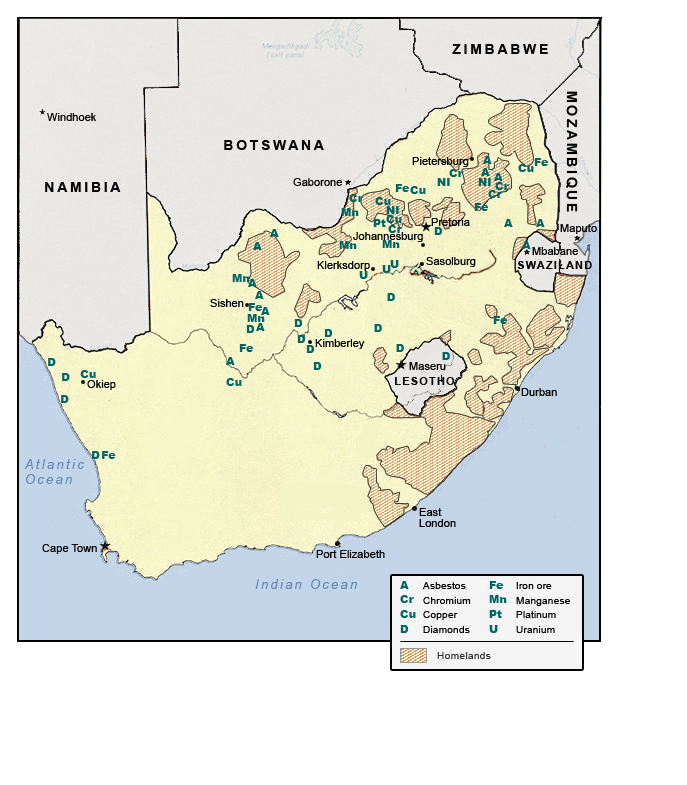Bantustans
Video Interviews
 "Most of our relatives were living in the homelands and schooling opportunities were limited."
"Most of our relatives were living in the homelands and schooling opportunities were limited." Video interview segment with Kgati Sathekge [2:59]
May 16, 2006
"We are thoroughly detribalized. It is the government of South Africa that has sought to exacerbate tribal feelings."
Video interview segment with Desmond Tutu January 15, 1986
Video interview segment with Desmond Tutu January 15, 1986
Images
 Map: Homelands (Bantustans) and Agricultural Resources, 1984
Map: Homelands (Bantustans) and Agricultural Resources, 1984By MATRIX, Michigan State University 2007
 Map: Homelands (Bantustans) and Industrial Areas and Ports, 1984
Map: Homelands (Bantustans) and Industrial Areas and Ports, 1984By MATRIX, Michigan State University 2007
Summary
The Bantustans (also known as "homelands") were a cornerstone of the “grand apartheid” policy of the 1960s and 1970s, justified by the apartheid government as benevolent “separate development.” The Bantustans were created by the Promotion of Bantu Self-Government Act of 1959, which abolished indirect representation of blacks in Pretoria and divided Africans into ten ethnically discrete groups, each assigned a traditional “homeland.” Established on the territorial foundations imposed by the Land Act of 1913 (amended in 1936), the homelands constituted only 13% of the land – for approximately 75% of the population.The Bantu Homelands Citizenship Act of 1970 declared that all Africans were citizens of “homelands,” rather than of South Africa itself - a step toward the government's ultimate goal of having no African citizens of South Africa. Between 1976 and 1981, four homelands – Transkei, Venda, Bophuthatswana, and Ciskei – were declared "independent" by Pretoria, and eight million Africans lost their South African citizenship. None of the homelands were recognized by any other country. Limiting African political rights to the homelands was widely opposed, and, in 1986, South African citizenship was restored to those people who were born outside the four “independent” homelands. After 1994, the homelands were reabsorbed into South Africa.
Web Documents
Magazine Article: "Where Shall I Go?", The Black Sash
By David Rabkin
[more info]
[Go to source directly and leave this site]
By David Rabkin
[more info]
[Go to source directly and leave this site]

Magazine Article: "Hunger in the Homelands - Past Causes", The Black Sash
By David Webster
[more info]
[Go to source directly and leave this site]
By David Webster
[more info]
[Go to source directly and leave this site]

Magazine Article: "Hunger in the Homelands: Present Conditions", The Black Sash
[more info]
[Go to source directly and leave this site]
[more info]
[Go to source directly and leave this site]

Journal Article: "Transkei Re-Visited", Liberation
By Nelson Mandela
[more info]
[Go to source directly and leave this site]
By Nelson Mandela
[more info]
[Go to source directly and leave this site]






